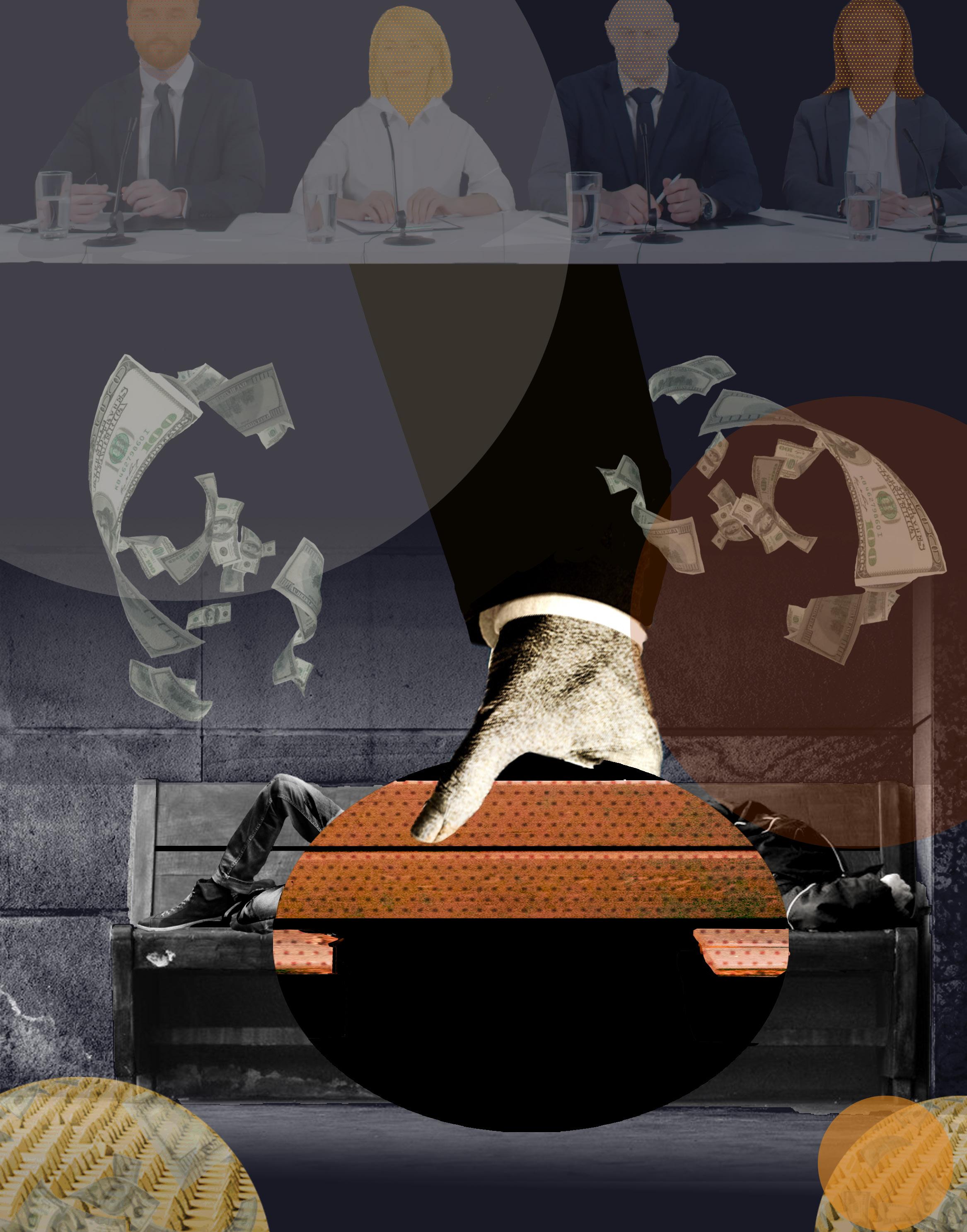
2 minute read
MAIYA LOPEZ // COPY EDITOR
from Fall Magazine 2021
HOSTILE ARCHITECTURE
ANNALYSE THORPE // GUEST WRITER
Advertisement

Anti-homeless architecture is slowly becoming normal in day-to-day society, but people seem oblivious to the genuine nature of these structures. As a result, cities are forcing hostile architecture into parks, streets, and subway stations to deter displaced people from getting decent rest. The most typical structures are benches with armrests in between, preventing people from laying flat on their backs or putting their belongings next to them on the seat.
However, these are not the only ones. Specifically, “leaning benches” have popped up in New York City subways, causing increased tensions from the public. These benches are slanted rests against the subway walls where people can place their lower back on the wood and lean as opposed to comfortably sitting. These structures deter homeless people, but many people with physical disabilities or pregnancies cannot sit and wait for the train. Cities have also been promoting separated benches as architecture for disabled people, mainly consisting of leaving gaps between benches and claiming it for people in wheelchairs. These benches and statements harm the homeless community and the disabled community as the city is using them to scapegoat their bigotry. But these structures tend to be highly noticeable changes to your local park or city street. Cities are currently producing curved benches that wrap around planters, and they are making more of an appearance in areas across America. Or picnic tables with curved seating underneath instead of straight seating. These benches make it nearly impossible to lay on for someone to rest while still allowing residents to regard them as ordinary park benches.
Some of these benches even exist in Sacramento, where many displaced people gather on the streets. We’ve all seen at least one homeless encampment on the sidewalks driving around, but they would not have to be so vulnerable if they could sleep on the benches around the city. The city has been putting metal rivets on concrete benches in parks to stop people from sleeping on them, and benches now have arms separating them into sections. Unfortunately, these changes do not make Sacramento look more appealing to tourists as they now force the displaced into very public places just so that they can sleep.
These structures are incredibly detrimental to the homeless population and force them either to the streets or into unsafe sleeping areas such as under freeway overpasses. Cities should be pushing the funding for these hostile structures to give homeless shelters free transportation, building homeless shelters, or even supplying free meals to homeless people around the area. Rather than do that, cities insist on driving these people away and causing them to be in public, pushing them to higher rates of homeless violence, death and increasing residents’ hatred towards homeless people. Anti-homeless structures need to end, and city governments need to work on eliminating the issue of homelessness in the states.






